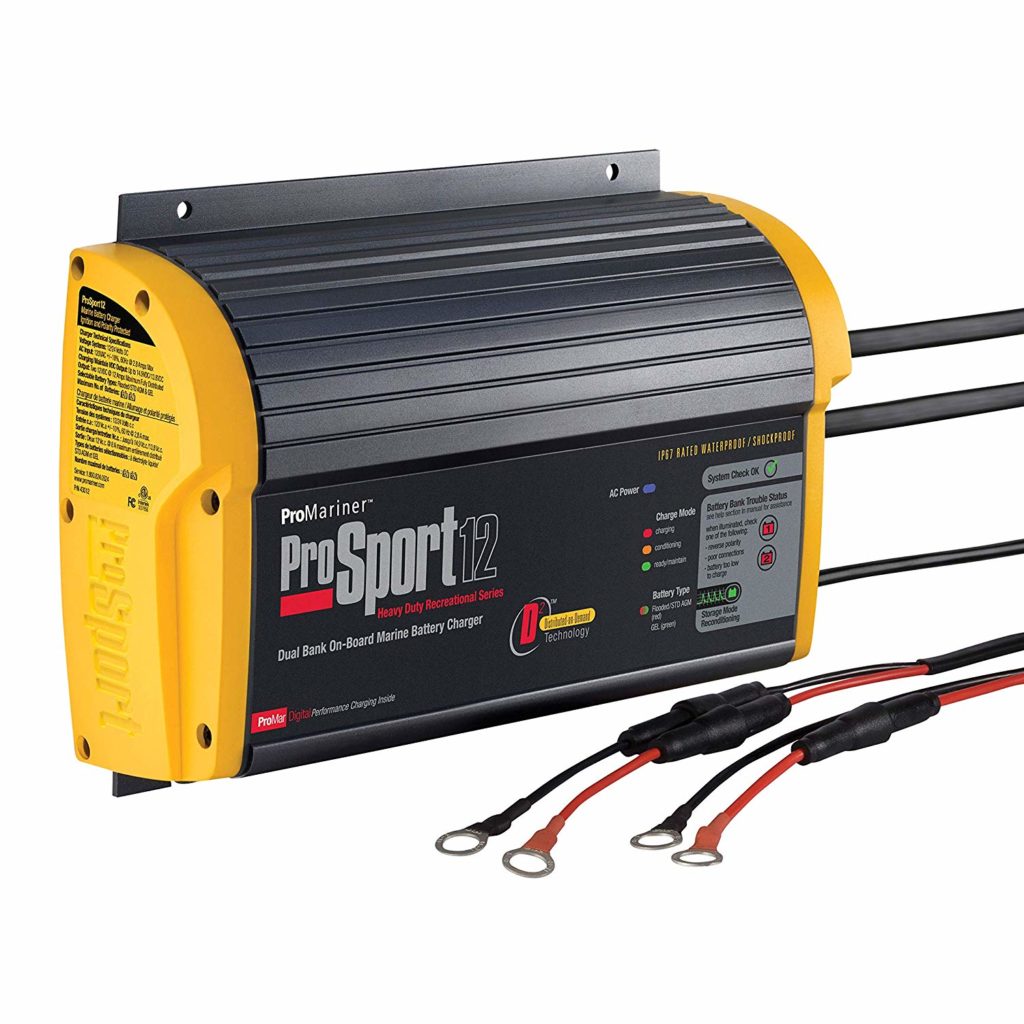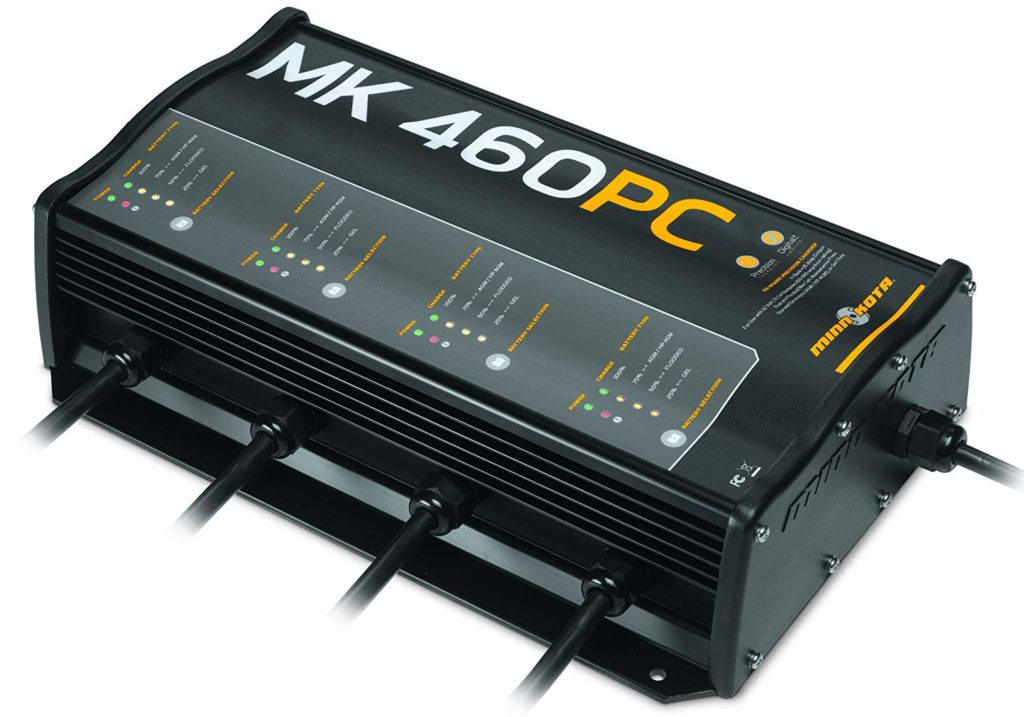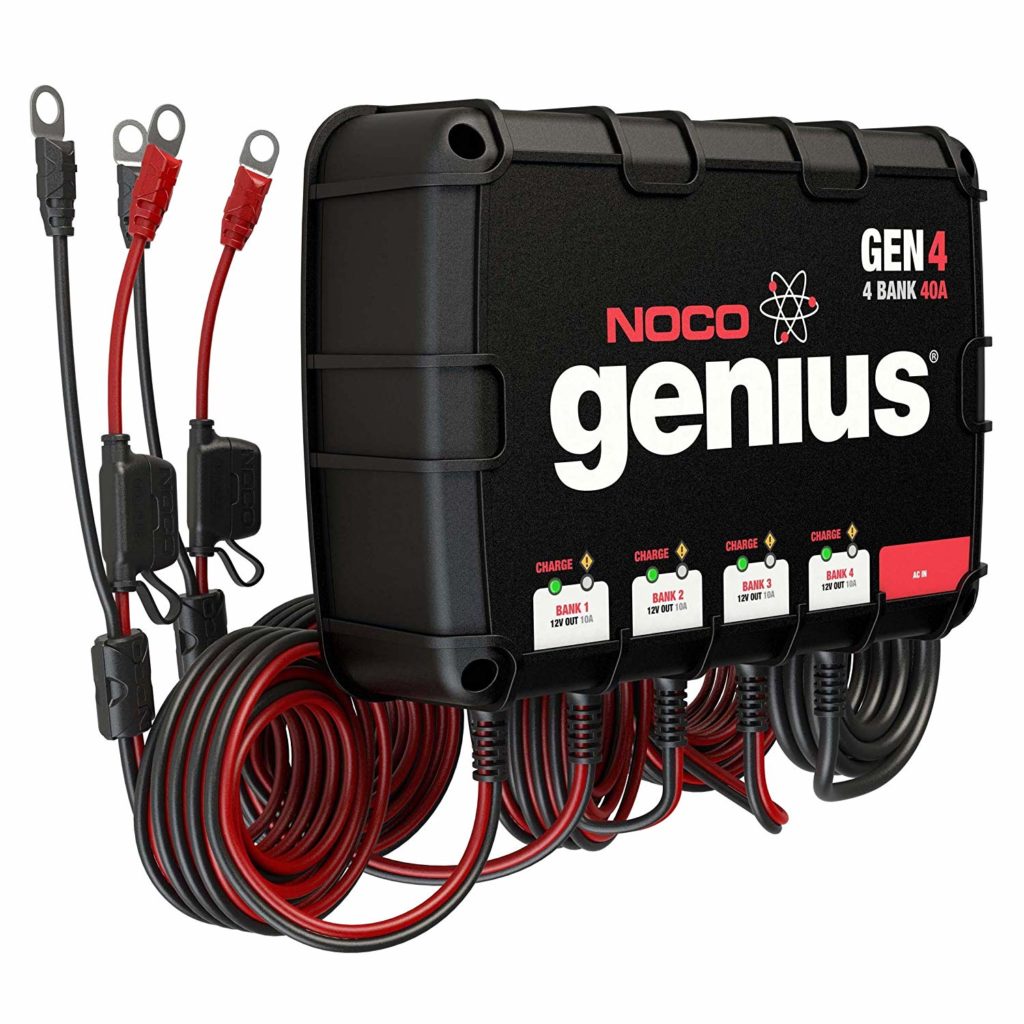
There’s nothing more disappointing than planning to spend a day on the water…only to find a dead battery. Most of the time, it’s our fault. Failing to properly maintain batteries lessens both their power and serviceable life. Onboard battery chargers keep those batteries ready whenever you are. Here’s what to look for.
A Marine-Grade Charger Built to Handle A Nasty Environment

Don’t be tempted with to save money with an automotive charger; they’re not de-signed for marine use. Instead, choose a quality, ignition-protected, marine-grade charger that meets American Boat & Yacht Council (ABYC) as well as UL standards. Ideally, that charger will be fully potted (encapsulated in resin) or feature other waterproof construction, resist corrosion and enable mounting in damp or possibly wet locations.
Proper Size And Output

An onboard battery charger should have an output equal to 10-percent or more of your boat’s battery capacity. Err on the higher side if you’re unsure. Better to have more output than you need than not enough.
Options For Mounting Locations

When choosing a charger, keep in mind how its physical footprint will match up with your intended mounting location. Ideally that location will be cool, dry and have plenty of ventilation. (Choose a storage compartment? Avoid packing it full to ensure ventilation is adequate.) Close to the battery or battery bank is ideal to lessen voltage drop and reduce installation costs but avoid mounting directly adjacent or above as charging batteries give off gases that can be corrosive, even ex-plosive.









